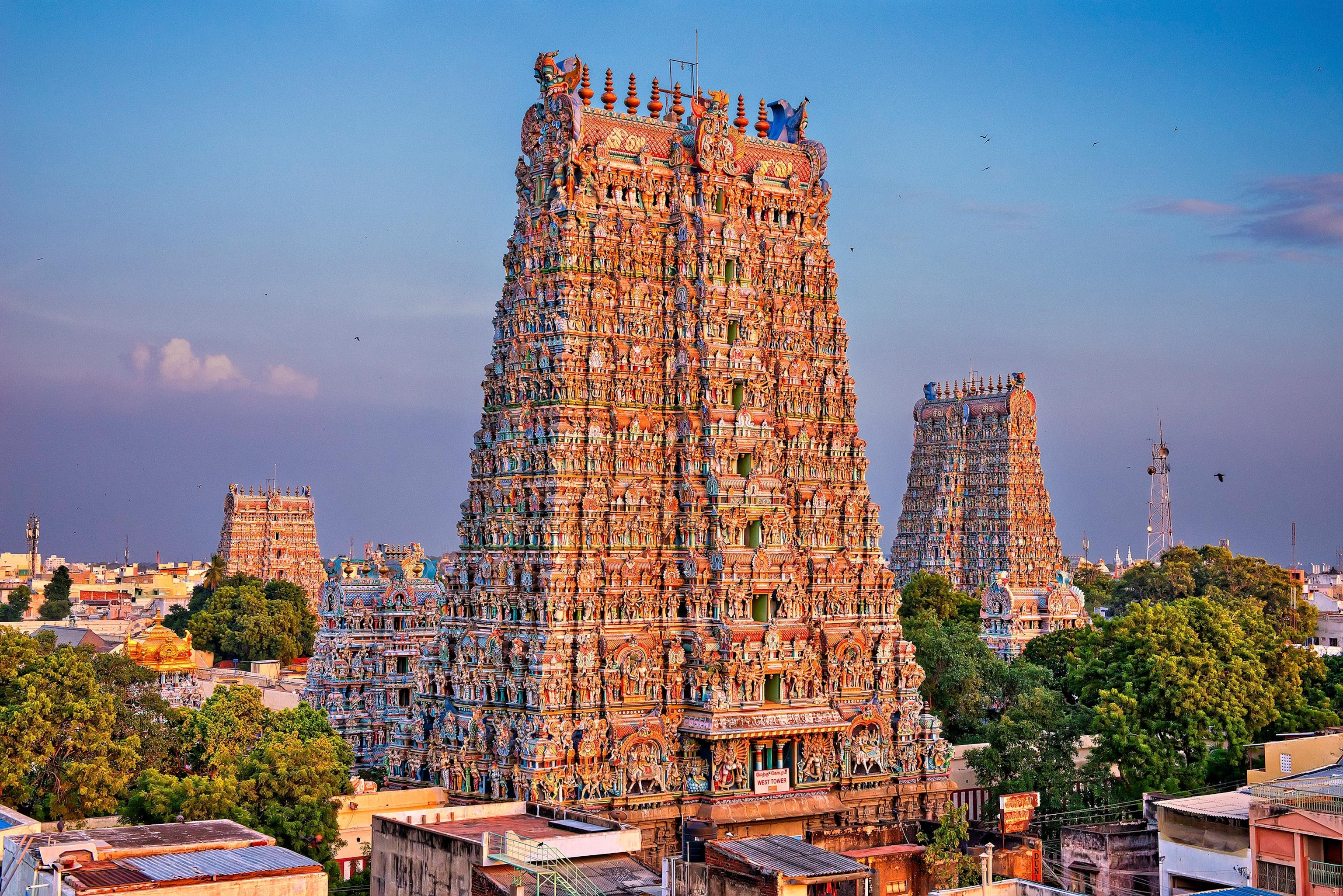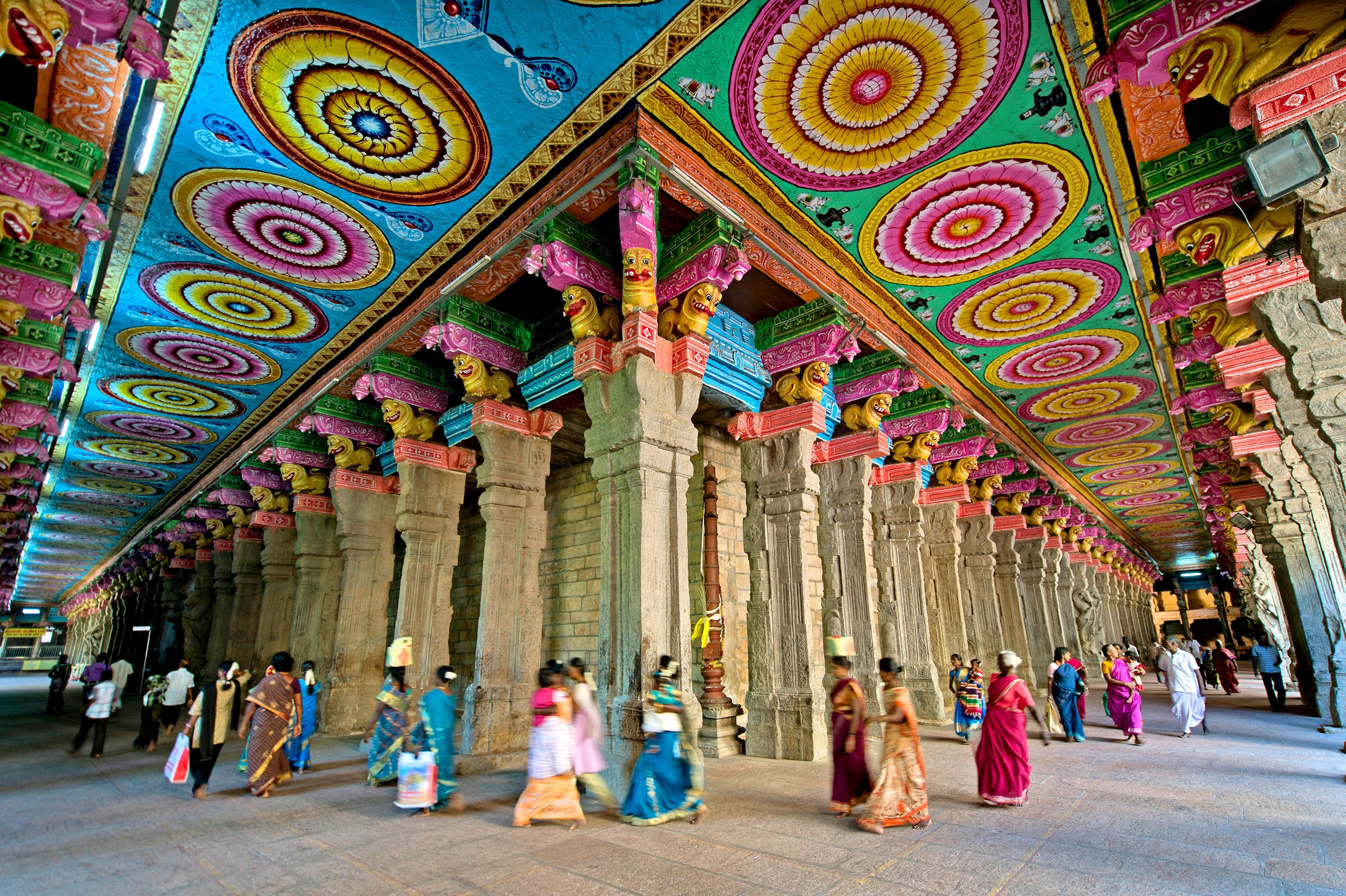
This Temple Is Covered in Thousands of Colorful Statues
The Meenakshi Amman Temple in South India is one of the largest sacred sites for Hindus.
In the center of the ancient city of Madurai lies one of the largest temple complexes in India. Peeking out from the 20-foot wall surrounding the site, the famous temple is a beacon for the 15,000 devotees who make the pilgrimage to the state of Tamil Nadu daily.
Dedicated to the goddess Meenakshi—the incarnation of the Hindu goddess Parvati—this temple is one of the few religious monuments in India devoted to a female deity. Known as the fish-eyed goddess because of her perfectly shaped eyes, Meenakshi represents fertility and love.

The temple is a celebration of the divine union between her and her lover, Sundareshvara (Shiva in Hinduism). In the heart of the complex are the shrines of the temple’s namesakes. Every evening, Sundareshvara is carried to Meenakshi’s silver bedchamber in an elaborate procession before being returned to his own place at morning prayer.
The temple is a symbol of Dravidian architecture, known for its enormous size and lofty gopurams, or towers, which are enclosed by decorated pillars. Unique to the site are its four main entrances, each facing one of the cardinal directions. Thousands of vibrantly painted stone statues depicting animals, gods, and demons line the walls of the temple’s 14 towers, the tallest of which is 170 feet. These are repainted and repaired every 12 years. The Hall of a Thousand Pillars, which doubles as the temple’s museum, also features an intricately carved sculpture on each column.

Tamil Hindus first built the temple in 600 C.E. before it was destroyed by Muslim conquerors in the 1300s. After 250 years, the sacred site was rebuilt during the 16th century into the magnificent structure seen today. According to ancient Tamil literature it was originally built by survivors of the lost continent of Kumari Kandam, a mythical landmass that extended across the Indian Ocean.
Many consider Meenakshi Temple as significant to South India as the Taj Mahal is to North India. Scores of pilgrims visit the complex for solo meditation, to join prayers led by resident Brahmin priests, and to bathe in the pond with golden lotus flowers, believed to bestow success on those who enter.
Information about temple hours, events, and visitor etiquette can be found here.
Follow Karina Sharma on Twitter.
Vibrant Photos of India
































